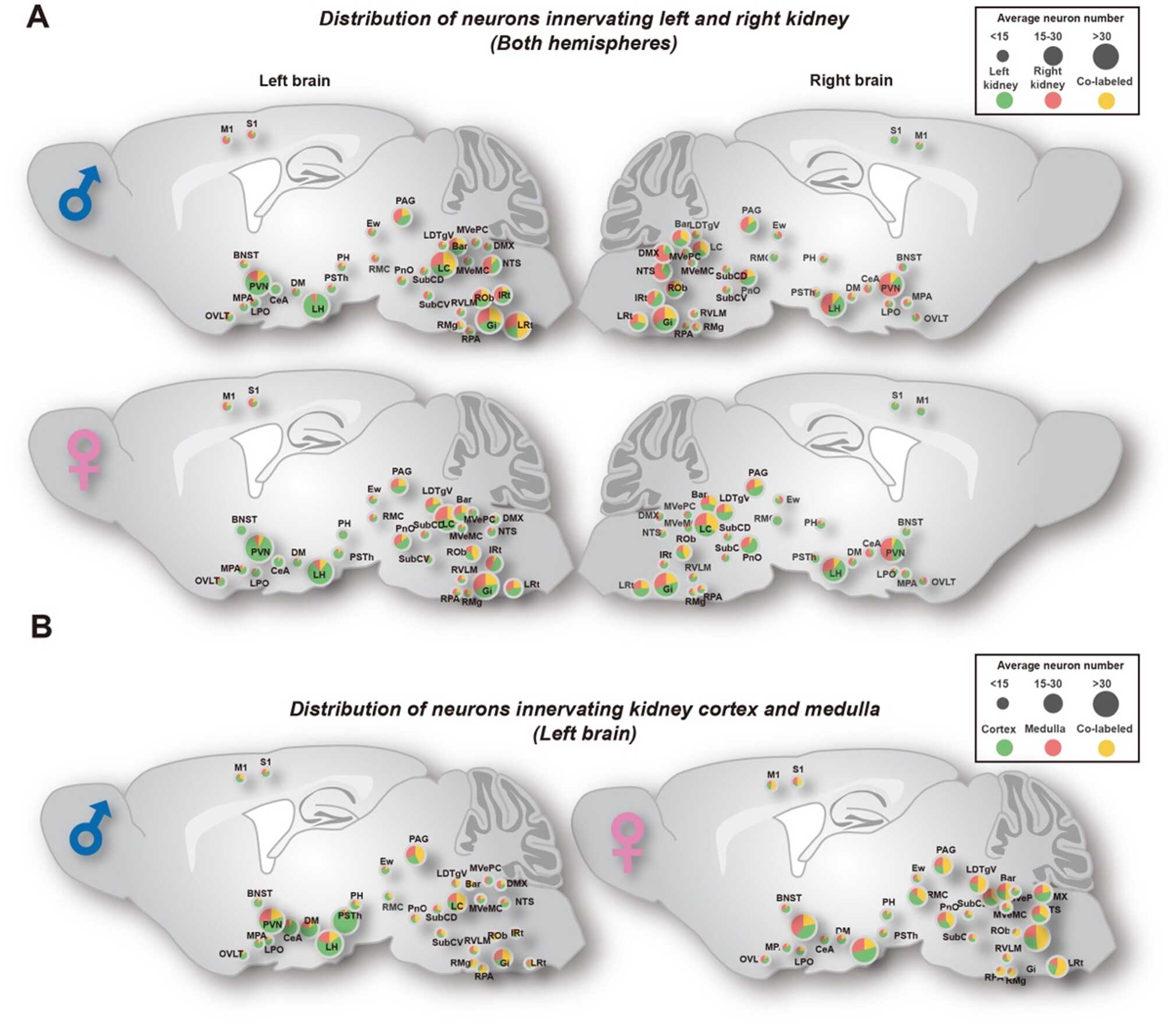Mapping the Neural Network Connecting the Kidneys and Brain in Mice
Date:20-08-2024 | 【Print】 【close】
A research team lead by Prof. WANG Liping and Prof. WANG Feng at the Shenzhen Institute of Advanced Technology (SIAT) of the Chinese Academy of Sciences, has successful mapped the neural network innervating the kidneys in male and female mice,providing a comprehensive insight into the brain's role in coordinating multiple organs to maintain the body's internal balance.
The study was published in Neuroscience Bulletin on Jun. 19.
The kidneys, recognized as the key excretory organs, filter about 24% of the daily cardiac output, maintaining water-salt balance and regulating blood pressure. Significantly, fluctuations in mood can result in sudden increases in blood pressure, not only by causing the narrowing of blood vessels but also by stimulating the release of renin through renal nerves. Moreover, clinical observations have established a connection between kidney diseases and sleep disturbances, cognitive impairments, and emotional issues.
It is well-known that the brain and kidneys are extensively interconnected in terms of physiology, but the specific neural pathways connecting the two—especially with regard to sexual differences—have remained somewhat unclear.
Importantly, the study revealed an asymmetrical distribution of neurons in five key brain regions between left and right kidney networks. The study also disclosed sexual differences in the density of renal innervation within the lateral hypothalamus.
“Our study provide a detailed map of kidney-brain connectivity and considered the neural innervation of different functional and structural components of the kidney, along with the impact of sex,” said Prof. WANG Feng.
Prof. WANG Liping pointed out the broader implications of their findings, suggesting that various visceral organs might share a similar central network as seen in the kidneys, highlighting the brain's integrative role in maintaining homeostasis across different organs and tissues.
The research deepens understanding of renal functions in various contexts. It also has the potential to develop new intervention strategies for mental and physical comorbidities.

Distribution of neurons innervating the kidneys in male and female C57BL/6J mice (Image by SIAT)
Media Contact: LU Qun
Email: qun.lu@siat.ac.cn
Download the attachment: